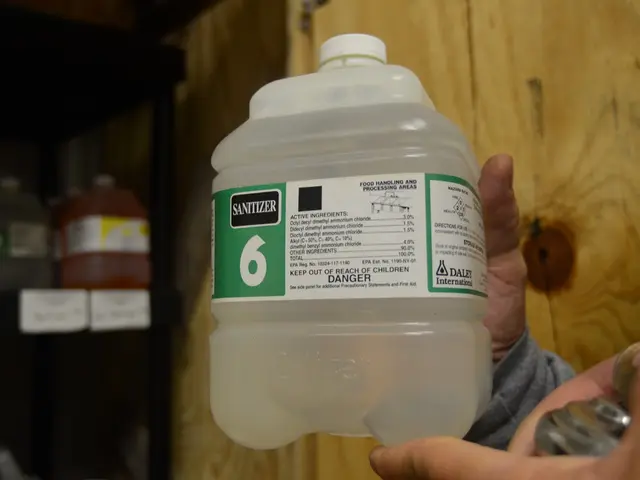Guidelines for Alleviating PBC Itch
Primary Biliary Cholangitis (PBC) is a liver disease that can cause a range of symptoms, one of which is itchy skin, also known as "cholestatic pruritus." This article provides an overview of the available treatments for managing PBC-related itch.
PBC itch is often worse at night and is not associated with a rash or allergies. If you're dealing with itchiness as a result of PBC, talking with a healthcare provider can help you find the strategy that will work best for you.
There are several medications that healthcare providers can prescribe to manage PBC itch. One of the main approaches involves reducing bile acid levels or modulating receptors involved in itch signaling to relieve symptoms.
Linerixibat, an experimental oral drug, significantly reduces itching by inhibiting the transport of bile acids. It has shown to decrease pruritus and improve sleep quality in clinical trials, although its side effects are mostly gastrointestinal, such as diarrhea and abdominal pain.
Seladelpar (Lyvdelzi), another promising agent, activates a protein called PPAR delta, which helps control bile acid production. By reducing bile acid levels, it both diminishes liver inflammation and improves cholestatic itching in PBC patients.
Ursodeoxycholic acid (UDCA), though mainly aimed at slowing liver damage, is often used in combination with other drugs and can help alleviate symptoms including itching indirectly by improving bile flow.
Other agents sometimes used include Cholestyramine, a bile acid sequestrant that binds bile acids in the gut to reduce their itch-inducing effects. Rifampicin, an antibiotic, helps reduce pruritus in cholestatic liver diseases, although its use may not be as common. Naltrexone, an opioid receptor antagonist, may help alleviate itch by modulating central nervous system pathways. Sertraline, an antidepressant, is sometimes used to treat pruritus when other treatments fail.
PPAR agonists are newer medications for PBC that have shown to manage the condition overall and help with itchiness. Obeticholic acid (OCA), a PPAR agonist, can make itch worse in people with PBC, so it's not typically used for managing itch.
The exact mechanism behind PBC itch is complicated, but involves a backup of bile in the body triggering a reaction that irritates peripheral nerves. Ileal bile acid transporter (IBAT) inhibitors are undergoing clinical trials for PBC itch, keeping bile from being reabsorbed, potentially reducing itch. Notably, IBAT inhibitors have been approved for pediatric bile duct disease such as Alagille's syndrome.
In summary, newer agents like linerixibat and seladelpar directly target bile acid transport or production pathways, offering promising advances in managing PBC-related itch. As always, it's important to discuss treatment options with your healthcare provider to determine the best course of action for your specific condition.
[1] https://www.ncbi.nlm.nih.gov/pmc/articles/PMC7820227/ [2] https://www.ncbi.nlm.nih.gov/pmc/articles/PMC6690593/ [3] https://www.ncbi.nlm.nih.gov/pmc/articles/PMC7068117/ [4] https://www.ncbi.nlm.nih.gov/pmc/articles/PMC4231443/
- Chronic kidney disease, breast cancer, mental health, and skin care are unrelated to Primary Biliary Cholangitis (PBC), but they are important topics in health and wellness.
- In addition to medications, therapies and treatments for PBC-related itch may include antidepressants such as Sertraline, and opioid receptor antagonists like Naltrexone.
- Research is ongoing for therapies and treatments for PBC-related itch, with ileal bile acid transporter (IBAT) inhibitors proving promising in clinical trials.
- Medical-conditions like chronic-diseases, such as chronic-kidney-disease and cancer, require different therapies and treatments than PBC or its related itch.
- While the exact mechanism of PBC itch is complex, it primarily involves a backup of bile in the body triggering a nerve reaction.
- In managing PBC-related itch, healthcare providers can prescribe medications such as Linerixibat and Seladelpar, which target bile acid transport pathways, offering potential advances in treatment.








